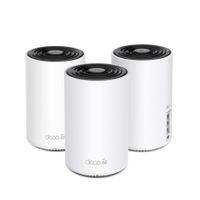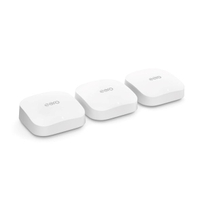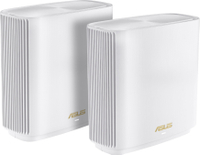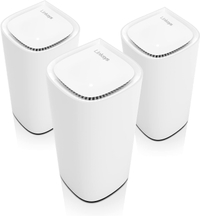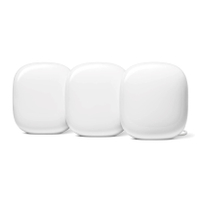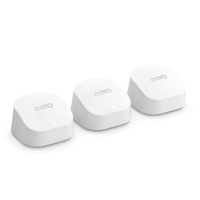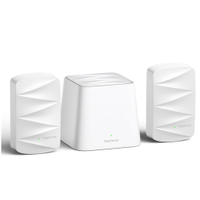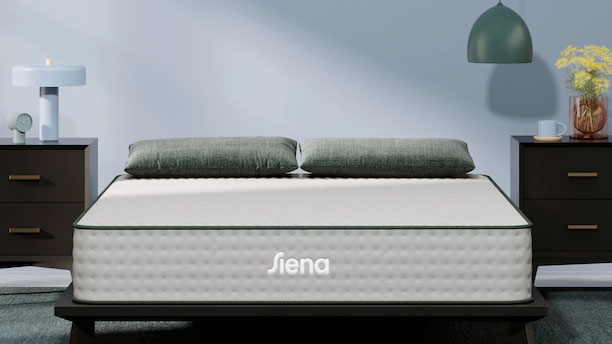Forget Wi-Fi dead zones: 7 Black Friday mesh router deals for whole-home Wi-Fi
Say hello to whole-home Wi-Fi coverage with these mesh router deals

Although there are already plenty of early Black Friday deals to be had on laptops, TVs and other gadgets, upgrading to one of the best mesh Wi-Fi systems could be an even better buy, especially ahead of the holidays.
Unlike with one of the best Wi-Fi routers, a mesh router or mesh Wi-Fi system can fill even the largest homes with a strong Wi-Fi signal. This means you won’t have to worry about switching networks with a Wi-Fi extender and you can have a strong internet connection in every room of your house as well as out in the backyard.
Here are a few of the best early Black Friday deals I’ve seen on the mesh routers we’ve reviewed. However, if you don’t see something you like below, keep checking back as I’ll be updating this guide frequently in the run-up to Black Friday and Cyber Monday.
Mesh router Black Friday deals — Quick links
- TP-Link Deco XE 75 (three-pack): was $449 now $309 @ Amazon
- Eero Pro 6E (three-pack): was $549 now $399 @ Amazon
- Asus ZenWiFi XT8 (two-pack): was $400 now $339 @ Amazon
- Linksys Velop Pro 6E (three-pack): was $400 now $350 @ Amazon
- Nest Wifi Pro (three-pack): was $399 now $279 @ Amazon
- Eero 6+ (four-pack): was $440 now $286 @ Amazon
- MeshForce M3 (two-pack): was $85 now $79 @ Amazon
Mesh router Black Friday deals: Best sales right now
TP-Link Deco XE 75 (three-pack): was $449 now $309 @ Amazon
The TP-Link Deco XE75 was one of the first affordable mesh Wi-Fi systems with Wi-Fi 6E support. It’s ideal for those with lots of devices at home as you can connect up to 200 connected devices to each unit with 2,400 square feet of Wi-Fi coverage. In our TP-Link Deco XE75 review, we said it’s one of the easiest mesh routers to set up and we were also impressed by the included security software.
Eero Pro 6E (three-pack): was $549 now $399 @ Amazon
The eero Pro 6E is a mesh Wi-Fi system from eero that can cover up to 6,000 square feet with a strong Wi-Fi 6E signal. Likewise, each unit supports more than 100 connected devices. The eero Pro 6E also has a wider design than the more compact eero 6+ but it's still compact enough to easily tuck away in a bookshelf. At the back, you'll find one gigabit Ethernet port as well as an auto-sensing 2.5 gigabit Ethernet port for multi-gig internet. In our eero Pro 6E review, we praised its quick setup process and the built in Zigbee and Bluetooth radios for controlling your smart home devices.
Asus ZenWiFi XT8 (two-pack): was $400 now $339 @ Amazon
The Asus ZenWiFi XT8 is a tri-band Wi-Fi 6 mesh router that comes with a two-year warranty and built-in security. Each device can cover up to 2,750 square feet with a strong Wi-Fi signal and Asus also includes an additional 5 GHz band for wireless backhaul. There are plenty of ports at the back of the Asus ZenWiFi XT8 including three gigabit Ethernet ports, a 2.5 gigabit Ethernet port for multi-gig internet and a USB port for sending data from a hard drive or a flash drive across your home network. In our Asus ZenWiFi XT8 review, we were really impressed by its built-in security software and unique design.
Linksys Velop Pro 6E (three-pack): was $400 now $350 @ Amazon
The Velop Pro 6E is a tri-band mesh Wi-Fi system with Wi-Fi 6E with a slim, tower-shaped design. Each unit can cover up to 3,000 square feet and supports up to 200 connected devices. The Linksys Atlas Max 6E has long been one of our favorite mesh routers but it is quite large and bulky. The Velop Pro 6E offers a similar experience in a much smaller form-factor.
Google Nest WiFi Pro (three-pack): was $399 now $279 @ Amazon
The Google Nest WiFi Pro is a stylish looking mesh Wi-Fi system with Wi-Fi 6E that can easily blend in with your home decor. Each device can act as either the router or a satellite and they both have two, gigabit Ethernet ports at the back. In our Nest WiFi Pro review, we praised its easy set up process, which is done through the Google Home app. While there were some performance issues at launch, these have now been fixed in updates from Google. This deal is on the white version of the Nest WiFi Pro but this mesh router is also available in several different colors, including a light blue, yellow and off white. For those with small children, the Nest WiFi Pro has built-in parental controls and security updates are automatically installed.
Eero 6+ (four-pack): was $440 now $286 @ Amazon
The eero 6+ is a mesh Wi-Fi system with Wi-Fi 6 support that’s made by Amazon. The devices themselves are absolutely tiny compared to other mesh routers, which means they’re easy to place throughout your home. Besides the reliability and simple setup that comes with eero’s mesh routers, there’s also a number of interesting extra features. For instance, you can use an Echo Dot as a mesh extender for free, and if you sign up for an eero Plus subscription, eero Internet Backup lets you use your phone’s hotspot to get your home network back online. If you want something more powerful, the eero Pro 6E also frequently goes on sale, but it is somewhat larger than the eero 6+.
MeshForce M3 (two-pack): was $85 now $79 @ Amazon
The MeshForce M3 is another budget mesh Wi-Fi system worth considering because of its attractive design. Instead of the towers you get with other mesh routers, this one uses plug-in extenders that are much easier to hide. In our MeshForce M3 review, we really liked the system’s excellent mid-range performance and range. It’s worth noting that this mesh router also ships with Wi-Fi 5, so don’t expect tremendously fast speeds. However, with a range of 105 feet, you’ll be able to push a strong Wi-Fi signal quite far.
Wi-Fi 6 vs Wi-Fi 6E vs Wi-Fi 7

When it comes to picking out your new mesh router, you might be wondering which Wi-Fi standard to go with, especially now that there are three different ones to choose from. While your budget will play a big factor, it’s also worth thinking about your current internet speeds and whether or not you’re going to want to upgrade sooner rather than later.
Released back in 2019, Wi-Fi 6 uses both the 2.4 and 5-gigahertz (GHz) bands to move data across your home. While the 5 GHz band is faster, the 2.4 GHz band has better range and is perfect for smart home devices like the best outdoor security cameras.
Wi-Fi 6E on the other hand is newer but not the latest wireless standard following the launch of Wi-Fi 7-equipped routers earlier this year. Although this is more of an incremental upgrade, Wi-Fi 6E does have one major benefit over its predecessor. It adds a new 6 GHz band that’s blazing fast and easily reaches speeds over a gigabit per second. However, keep in mind, you will need to be close to your router to see these kinds of speeds.
Wi-Fi 7 is the latest and greatest wireless standard and as such, mesh routers that support it — like the Orbi RBE973 and TP-Link Deco BE85 — are priced much higher. This is changing though and by next year, there will likely be quite a few more budget-friendly options to choose from. If you want a future-proof mesh Wi-Fi system now though and don’t want to have to upgrade anytime soon, getting a mesh router with Wi-Fi 7 could be worth it.
How to choose the best mesh router for your home
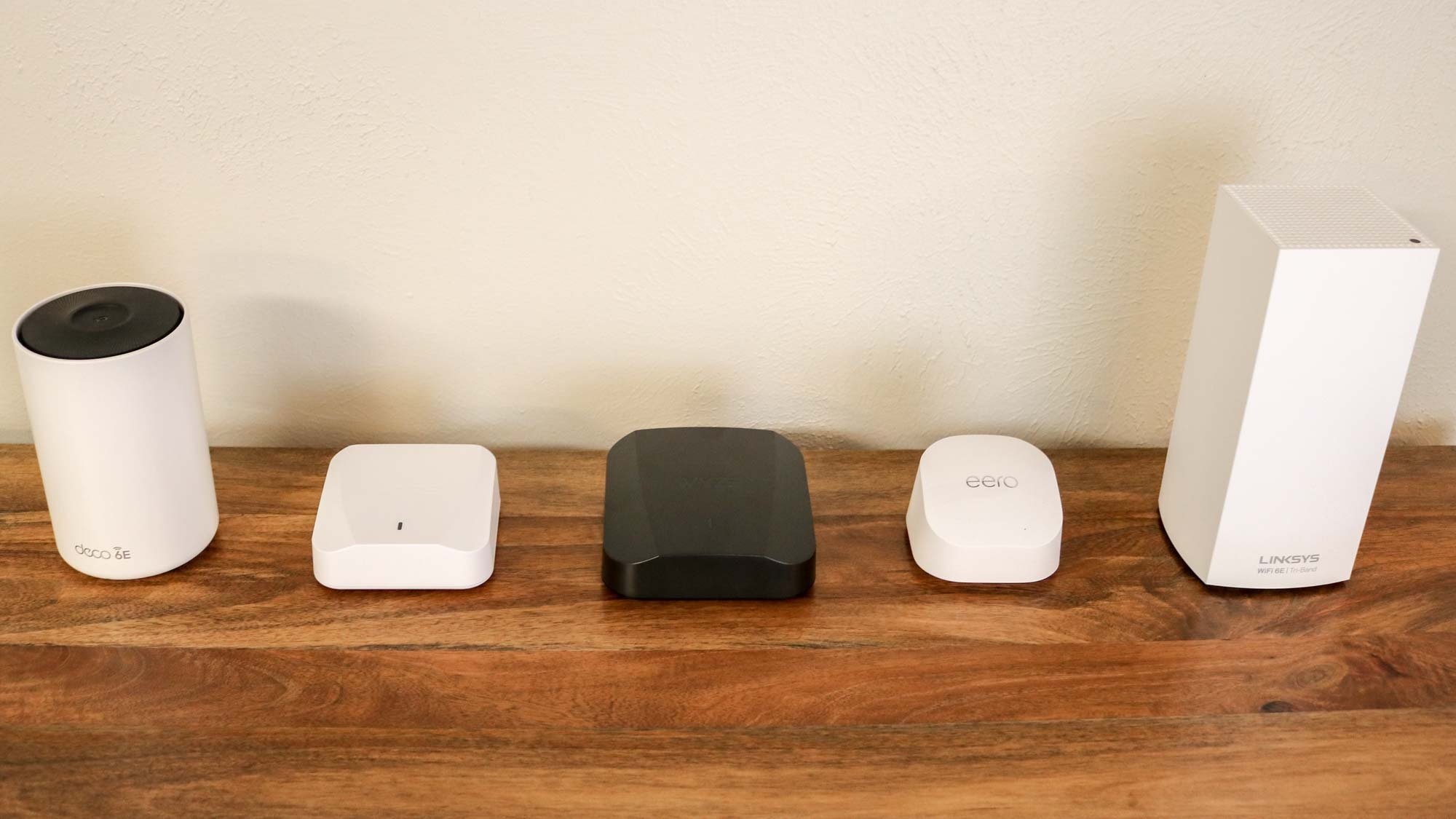
Whether you’re having your family over for the holidays or just want to get the most out of that new M3 MacBook Pro you’ve just unwrapped, there’s nothing quite like using a mesh router if you haven’t before. I upgraded to one last year and it’s completely changed how myself and my family stay connected while at home.
If you are thinking about giving your home network a big upgrade with a new mesh Wi-Fi system, don’t forget to pair it with one of the best cable modems, especially if you want to break free from your ISP and stop paying those expensive monthly rental fees.
Regardless of which model of mesh router you pick up, you’re going to see a noticeable difference when it comes to your internet coverage. However, if you don’t plan accordingly, you may still end up with some Wi-Fi dead zones. Fortunately, this can always be fixed by adding extra satellites.
To save yourself some hassle though, it’s a good idea to know how many square feet your home or apartment is before you start shopping. Most mesh routers have a range of 2,000+ square feet and if you buy a two-pack, you’ll be able to cover 4,000 square feet with a strong Wi-Fi signal.
You also want to take the design of your home into account and figure out where you want to place the main unit and its satellites. For instance, if you have interior walls made from brick or concrete or own a home with multiple floors, then you might need a three-pack instead. It’s also worth noting that some mesh routers work with your older devices, so you don’t have to get rid of them and can instead use them to build out your home network’s coverage further. Both Amazon’s eero and TP-Link’s Deco devices are compatible with older models for instance.
For those on a tight budget that don’t want to pay a lot to have reliable, whole-home Wi-Fi, also check out our guide on the best cheap mesh Wi-Fi systems which can all be had for less than $100.
If you are thinking about giving your home network a big upgrade with a new mesh Wi-Fi system, don’t forget to pair it with one of the best cable modems, especially if you want to break free from your ISP and stop paying those expensive monthly rental fees.
Sign up to get the BEST of Tom's Guide direct to your inbox.
Get instant access to breaking news, the hottest reviews, great deals and helpful tips.

Anthony Spadafora is the managing editor for security and home office furniture at Tom’s Guide where he covers everything from data breaches to password managers and the best way to cover your whole home or business with Wi-Fi. He also reviews standing desks, office chairs and other home office accessories with a penchant for building desk setups. Before joining the team, Anthony wrote for ITProPortal while living in Korea and later for TechRadar Pro after moving back to the US. Based in Houston, Texas, when he’s not writing Anthony can be found tinkering with PCs and game consoles, managing cables and upgrading his smart home.
